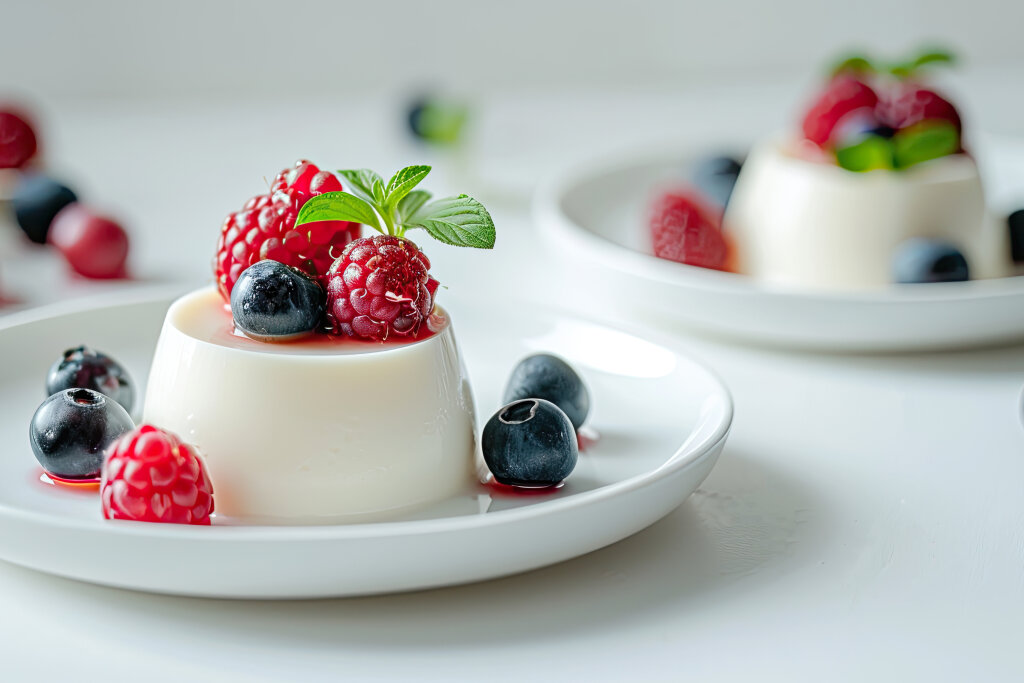Few desserts are as effortlessly elegant and universally beloved as panna cotta. With its silky texture, light sweetness and endless versatility, panna cotta has found its place on menus across the world. But this simple, creamy delicacy – whose name means cooked cream in Italian – has a history that spans centuries.
The dessert is widely believed to have emerged in the northern Italian region of Piedmont, possibly as early as the 19th century. The exact details of its creation are unclear, with some culinary historians suggesting that it may have been inspired by the custards and cream desserts that were popular in Europe during the Middle Ages.
Traditionally, panna cotta was made using just a few simple ingredients: cream, sugar and gelatin. The cream was sweetened, heated and mixed with gelatin to set, then chilled until it formed a delicate, jiggly consistency. It was often served plain or with a topping of fresh berries, caramel, or a drizzle of chocolate sauce. What set panna cotta apart from other creamy desserts like custard or flan was its texture: firm enough to hold its shape but soft and melt-in-your-mouth smooth.
Its cultural significance extends beyond its flavour and texture; panna cotta represents the beauty of Italy’s regional cuisine, which often focuses on fresh, quality ingredients and straightforward preparation.
As panna cotta spread beyond Piedmont and Italy, it began to evolve in fascinating ways. In modern Italian restaurants, the dessert often takes on luxurious variations, incorporating different flavours like vanilla, coffee or citrus, and is frequently topped with exotic fruits, nut-based pralines or even gourmet sauces made from balsamic reduction or honey.
Outside Italy, panna cotta has become a staple of fine dining. In France, for instance, it has been infused with lavender or served alongside tuiles, delicate wafer-like biscuits. In the United States, panna cotta appears on menus ranging from high-end restaurants to casual eateries, often reimagined with local ingredients like maple syrup.
In the Middle East, panna cotta is sometimes infused with rosewater or orange blossom, reflecting the region’s love for fragrant, floral flavours. In Asia, chefs might add coconut milk or matcha powder to the base, creating unique twists that blend Italian tradition with local tastes.
Despite the many variations that have emerged over time, the essence of panna cotta remains unchanged: it is a dessert that celebrates simplicity, refinement and the joy of sharing a sweet treat.







Click here to change your cookie preferences